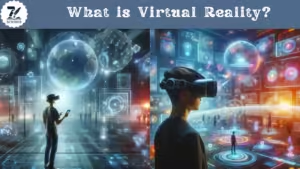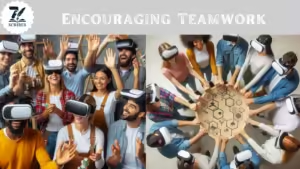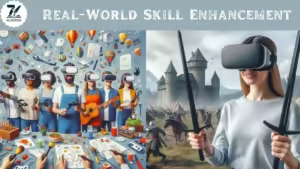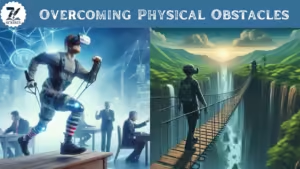Virtual reality is becoming an exciting resource in education, transforming the way learners learn and instructors instruct. By forming a virtual environment, VR enables students to experience and examine topics in ways that educational books simply cannot. Let’s explore how VR affects education and what it implies for the future of learning.
What is Virtual Reality?
Virtual reality refers to a digitally created, environment that individuals can connect with using specific tools like headphones and remotes. When wearing VR headphones, individuals sense like they are within a separate world, in which they are able to see, hear, and sometimes in fact touch objects. This engaging sensation is what makes VR so interesting for education.

Engaging Learning Experiences
One of VR’s most significant benefits in education is its capability to produce interesting learning events. Rather than studying historical events, learners may “explore” those times. For instance, they might explore a 3D simulation of old Rome or examine the area of Mars. This type of learning keeps learners focused and helps them retain what they learn better.

Making Complicated Concepts Understandable
Certain subjects, such as science and mathematics, may be difficult for students to understand. VR(Virtual Reality) can clarify complicated principles by offering graphical and engaging models. Such as, learners can observe molecular processes in a virtual laboratory without the dangers connected with actual experiments. Learners can see how molecules connect, making the topic much easier to comprehend.
Customized Learning Opportunities
Every learner learns uniquely and at their pace. VR(Virtual Reality) can provide customized learning experiences that address personal requirements. If a learner has difficulty with a specific subject, they can review it in a virtual environment until they feel confident. Alternatively, learners who understand concepts quickly can advance to higher-level subjects. This adaptability permits a more customized education that fulfills each learner’s requirements.
Encouraging Teamwork
Virtual Reality can also improve teamwork between learners. In a virtual environment, learners can work together on tasks, exchange concepts, and resolve challenges as a team. This type of teamwork is possible regardless of whether learners are not in the same physical place. For instance, a team of learners from various educational institutions could gather in a virtual environment to perform a collaborative scientific experiment or create concepts for a creative project. This encourages teamwork abilities and inspires learners to learn from each other.

Real-World Skill Enhancement
In certain fields, such as medicine and engineering, VR(Virtual Reality) is currently being used to educate learners. Medical learners can practice operations in a virtual environment, enabling them to improve their skills without placing actual patients at risk. Engineering learners can create and evaluate models in a virtual environment, obtaining practical knowledge before joining the labor market. These real-world uses prepare learners for their upcoming professions and provide them with confidence in their skills.

Overcoming Physical Obstacles
Virtual Reality can also support learners who experience physical obstacles to learning. For learners, students with disabilities may find it difficult to obtain specific places or activities. With VR(Virtual Reality), they can investigate environments they might never access in reality. This accessibility can improve their educational experience and offer learners with chances that might otherwise be inaccessible.

The Difficulties of Virtual Reality in Education
While the advantages of VR(Virtual Reality) are evident, there are also difficulties to consider. One significant issue is expense. VR(Virtual Reality) technology can be costly, and not all educational institutions have the financial resources to apply it. Furthermore, instructors may need training to efficiently use VR(Virtual Reality) in their learning environments. There are also additional health issues, as certain users may feel motion sickness or unease while utilizing VR(Virtual Reality) headsets.
Looking Ahead: The Future of Virtual Reality in Education
Despite the difficulties, the future of VR(Virtual Reality) in education appears hopeful. As technology progresses, VR(Virtual Reality) activities are expected to become less expensive and broadly accessible. Creators are working on creating additional learning materials that match educational guidelines, simplifying for instructors to include VR(Virtual Reality) in their lessons. We can look forward to seeing advancements in VR equipment, resulting in more comfortable and available experiences for learners. Imagine learning environments where learners can wear VR headsets and examine the universe, plunge into the ocean, or move through the human body—all from their workspaces. This type of learning could make education more stimulating and interesting than ever before.
Read more
Artificial Intelligence and Education: Revolutionizing Learning in the Digital Age
5 Emerging Technologies That Will Change the World
Mars Colonization